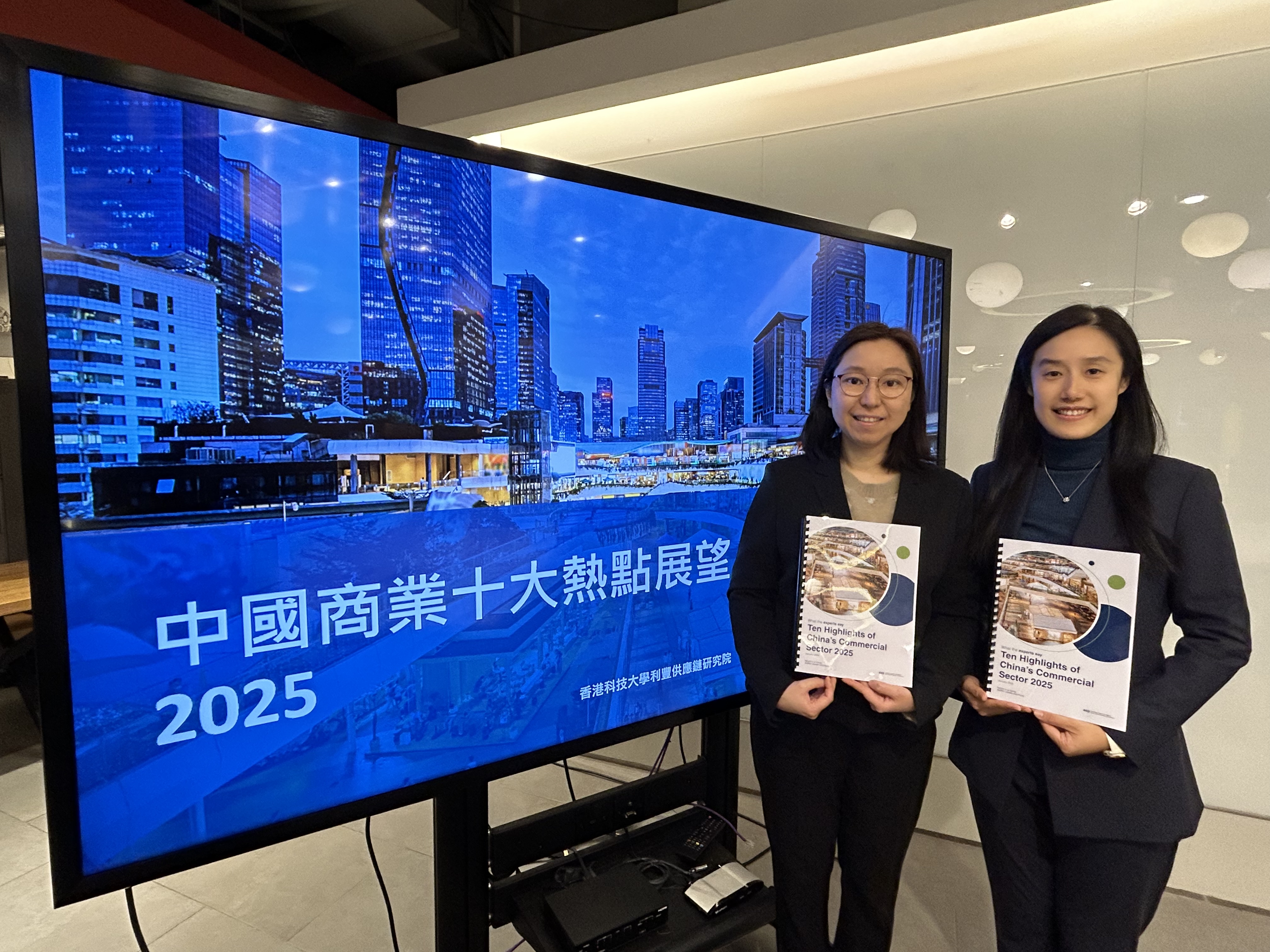Chinese Commercial Sector Poised for Growth with Government Support
Release of Ten Highlights of China’s Commercial Sector, 2025
Hong Kong, 10 January 2025 — The HKUST Li & Fung Supply Chain Institute (Institute) releases the annual Ten Highlights of China’s Commercial Sector, 2025 (Ten Highlights) today.
According to the Institute, China's commercial sector saw a gradual recovery in 2024, despite being hindered by low consumer confidence amid economic and employment uncertainties. However, in 2025, the sector is projected to gain momentum, bolstered by supportive government policies and an increase in disposable income. As a result, China's GDP is estimated to grow by 4.5% in 2025, with retail sales expected to rise by 5%. Mr Chang Ka Mun, Executive Director of the Institute, emphasizes, “With the Central Government seeking to build a unified national market and prioritizing the boost of domestic demand as the first key focus, we anticipate a stronger year for China’s consumer sector in 2025.”
In 2024, China's commercial sector continued to evolve, driven by a combination of policy support and shifting consumer behaviours. This year has seen significant developments in digital transformation, service consumption, and environmental sustainability, reflecting the dynamic nature of the market and the resilience of businesses operating within it.
The Ten Highlights report indicates that service consumption remains a key growth area, with consumers increasingly seeking diverse and high-quality experiences. Innovations in service models, such as the integration of business, culture, tourism, and sports, have played a crucial role in this growth. The government's emphasis on developing a high-quality service industry has further supported these trends, creating new opportunities for businesses to thrive.
In an increasingly competitive landscape, many companies are actively seeking solutions to succeed. Ms Helen Chin, Research Head of the Institute, notes that “The importance of resilient supply chains has become clear as businesses grapple with shrinking profit margins and high turnover rates. Those that prioritize cost control, efficiency improvements, and innovative business models will successfully navigate these challenges.”
Furthermore, the report highlights that county-level markets have emerged as new growth frontiers in recent years, providing fresh opportunities for businesses. Rural consumers are increasingly seeking quality products and services, supported by government initiatives aimed at boosting rural incomes and consumption. Ms Chin points out that this trend underscores the potential of these markets and the necessity of tailored offerings to meet local demands. Environmental sustainability continues to be a prominent focus, with consumers showing a growing preference for green and healthy products. Businesses are responding by adopting eco-friendly practices and prioritizing sustainability in their operations, attracting environmentally conscious consumers and enhancing brand reputation.
The report also discusses the global expansion of Chinese retail enterprises. Together, it forecasts the following ten key highlights for 2025:
- Building of a unified national market and development of new quality productive forces enhance efficiency in the circulation system
- Consumer market experiences steady growth driven by policy support
- Upgrades in service consumption with further growth on the horizon
- The continuous expansion and upgrading of county-level commerce highlights consumption vitality
- The catering sector prioritizes value for money and promotes green, healthy consumption
- Retailers renewed focus on products and services to meet consumer needs
- Strong demand for fresh, high-quality produce drives effective consumption growth
- Digital consumption unlocks new growth for domestic demand while digital cultural consumption drives lifestyle changes
- Pioneering cost optimization and efficiency enhancement to drive excellence and high-quality development in commercial logistics
- Global expansion becomes inevitable, with compliance and localization being key
For further details on each highlight, please refer to the full report.
